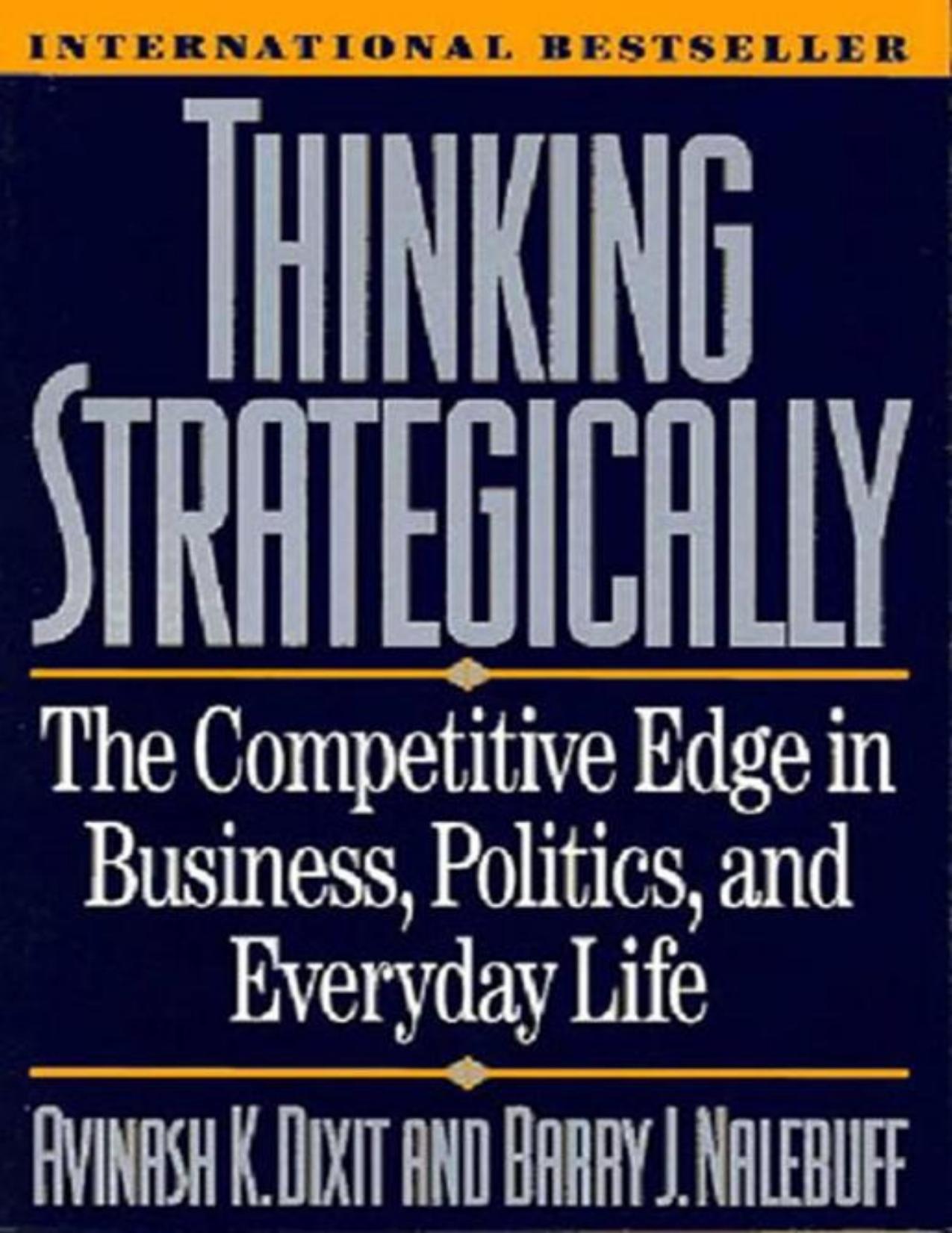Thinking Strategically: The Competitive Edge in Business, Politics, and Everyday Life by Dixit Avinash K. & Barry J. Nalebuff

Author:Dixit, Avinash K. & Barry J. Nalebuff [Dixit, Avinash K.]
Language: eng
Format: epub, mobi, pdf
ISBN: 9780393069792
Publisher: W. W. Norton & Company
Published: 1993-04-17T10:00:00+00:00
2. THE MECHANISM OF RISK
Just how does one go about generating a threat that involves a risk? In Chapter 7 we studied the idea of mixing one’s moves, and suggested several random mechanisms that could be used when selecting one from the range of actions being mixed. We might try the same idea here. For example, suppose that during the Cuban missile crisis, one in six is the right risk of war for Kennedy to threaten. Then he might tell Khrushchev that unless the missiles were out of Cuba by Monday, he would roll a die, and if six came up he would order the U.S. missiles to be launched.
Quite apart from the horror this picture conjures up, it just won’t work. If Khrushchev refuses to comply, and Kennedy rolls the die and six comes up, the actual decision is still in Kennedy’s hands. He still has the powerful urge to give Khrushchev just one more roll of the die (“let’s make it two out of three”) before Armageddon. Khrushchev knows this, and knows that Kennedy knows that, too. The credibility of the threat collapses just as surely as if the elaborate mechanism of rolling the die had never been mentioned.
An essential insight is that when a sharp precipice is replaced by a slippery slope, even Kennedy does not know where safety lies. It is as if he is playing nuclear Russian roulette instead of rolling a die. One number leads to disaster but he does not know which one that is. If the number comes up, he cannot change his mind and roll again.
With rational opponents, no one would ever cross the nuclear brink. But it is possible to fall down a slippery slope by mistake. Brinkmanship deliberately hides the precipice by creating a situation that is slightly out of control.
The risk in brinkmanship is therefore fundamentally different from the element of chance in mixing your moves. If the best proportions of your tennis serve are 50:50 between forehand and backhand, and you toss a coin before a particular serve and it comes up heads, you have no reason to feel happy or sorry about the fact. You are indifferent as to your action on each occasion; it is only the unpredictability of individual occasions, and the right proportions of chance, that matter. With brinkmanship, you are willing to create the risk before the fact, but remain unwilling to carry out the threatened act if the occasion arises. To convince your rival that the threatened consequence will occur, you still need other devices.
The most common is to take the actual action out of your control. It is not a matter of “If you defy me, then there is a risk that I will choose to do such and such.” Instead, it is “If you defy me, there is a risk that such and such will happen, however much both of us may regret it then.” Thus the credibility of brinkmanship still needs a device of commitment; only that device contains within it a coin toss or a die that governs what happens.
Download
Thinking Strategically: The Competitive Edge in Business, Politics, and Everyday Life by Dixit Avinash K. & Barry J. Nalebuff.mobi
Thinking Strategically: The Competitive Edge in Business, Politics, and Everyday Life by Dixit Avinash K. & Barry J. Nalebuff.pdf
This site does not store any files on its server. We only index and link to content provided by other sites. Please contact the content providers to delete copyright contents if any and email us, we'll remove relevant links or contents immediately.
Hit Refresh by Satya Nadella(8987)
The Compound Effect by Darren Hardy(8722)
Change Your Questions, Change Your Life by Marilee Adams(7552)
Nudge - Improving Decisions about Health, Wealth, and Happiness by Thaler Sunstein(7450)
The Black Swan by Nassim Nicholas Taleb(6937)
Deep Work by Cal Newport(6808)
Daring Greatly by Brene Brown(6361)
Rich Dad Poor Dad by Robert T. Kiyosaki(6307)
Principles: Life and Work by Ray Dalio(6110)
Man-made Catastrophes and Risk Information Concealment by Dmitry Chernov & Didier Sornette(5870)
Playing to Win_ How Strategy Really Works by A.G. Lafley & Roger L. Martin(5731)
Digital Minimalism by Cal Newport;(5576)
Big Magic: Creative Living Beyond Fear by Elizabeth Gilbert(5547)
The Myth of the Strong Leader by Archie Brown(5366)
The Slight Edge by Jeff Olson(5312)
Discipline Equals Freedom by Jocko Willink(5232)
The Motivation Myth by Jeff Haden(5116)
Stone's Rules by Roger Stone(4984)
The Laws of Human Nature by Robert Greene(4918)
